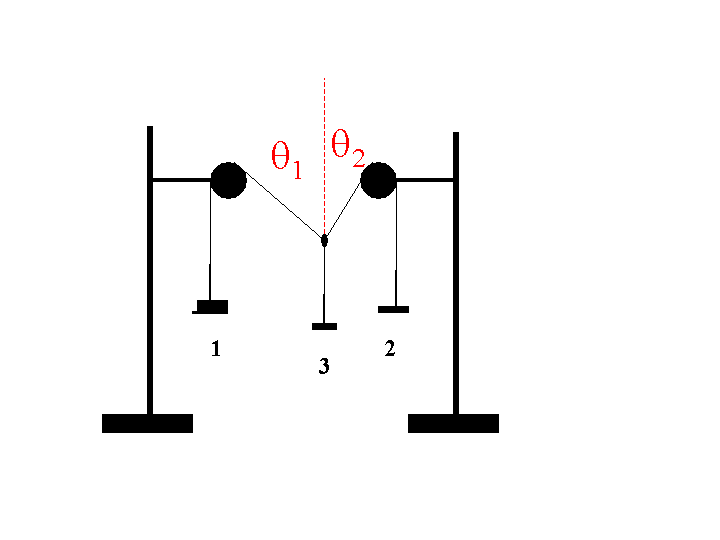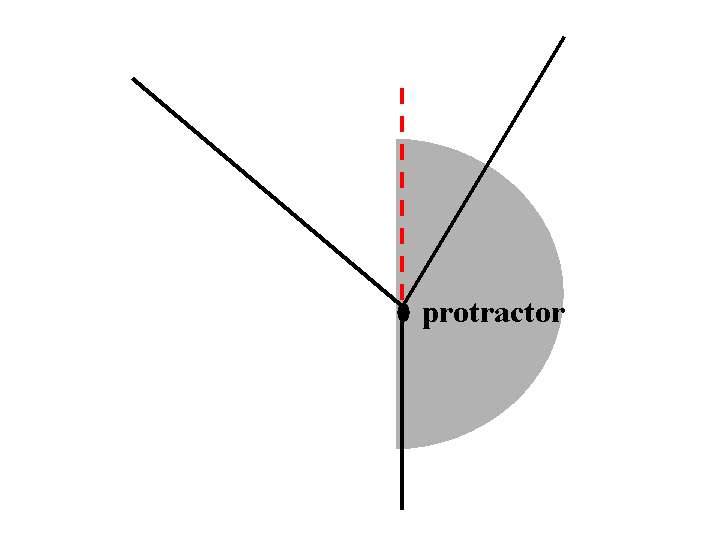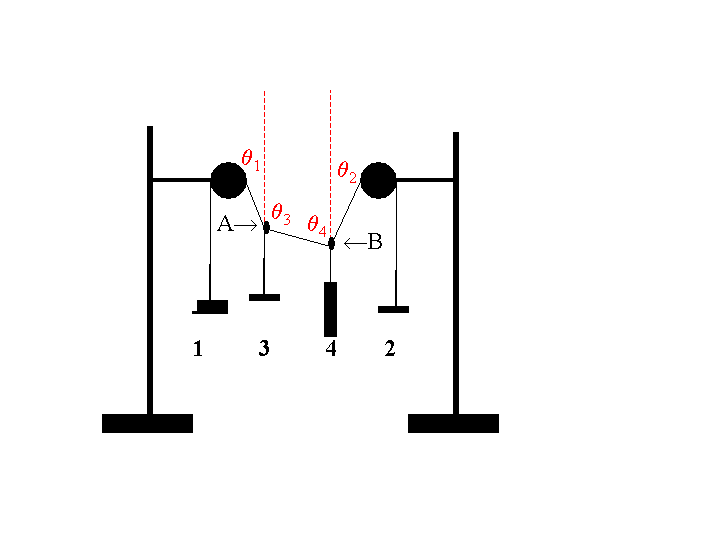

 PYL
105: Lab 4
PYL
105: Lab 4 


![]()
Forces in Equilibrium
Part 1: Confirming equilibrium
- Using ringstands, pulleys, strings and hangers, set up apparatus as shown below

- Later we will need the middle string to establish the vertical direction, so there should be few centimeters between the knot and the hanger.
- Place masses on the hangers. All three should have different masses. Provided none of the masses is too large, the middle mass will move horizontally and vertically until it finds a position of stable equilibrium. Record the masses and enter the corresponding tensions in the table below.
|
T1 |
T2 |
T3 |
q1 |
q2 |
|
|
|
|
|
|
- Use a protractor to measure the angles between the strings and the vertical. As shown below you can use the the string attached to middle hanger to establish a vertical line.

- The knot must be in equilibrium, that is, the net force on it must be zero. Therefore the horizontal components must be zero (within experimental error), and similarly the vertical components must be zero. Confirm that these conditions are met.
Part 2: Using equilibrium to find unknowns
- Tie another string (a few centimeters in length) and attach a fourth mass to the arrangement as shown below. The mass does not have to be a hanger.

- Record the tensions and angles.
|
T1 |
T2 |
T3 |
T4 |
q1 |
q2 |
q3 |
q4 |
|
|
|
|
|
|
|
|
|
- The tension along the string between knots A and B where hangers 3 and 4 is unknown. There are four distinct equilibrium conditions, each of which should allow you to calculate the magnitude of the unknown tension
- the x components for the knot A tensions
- the y components for the knot A tensions
- the x components for the knot B tensions
- the y components for the knot B tensions
Find the magnitude of the unknown tension using each condition. Calculate the percent difference (relative difference) between each value and the average. Did you obtain the same results within an acceptable amount of experimental error?
|
Method |
Unknown Tension |
Percent |
|
1 |
|
|
|
2 |
|
|
|
3 |
|
|
|
4 |
|
|
|
Ave |
|
|
- Imagine you had neglected to calculate q4, use the equilibrium conditions to calculate it. Compare the value you find with the measured value. Is the difference between your measured and calculated value acceptably small?
![]()